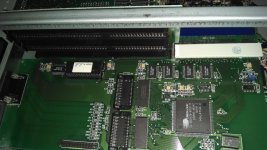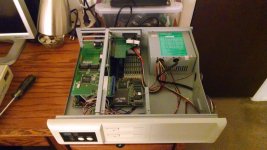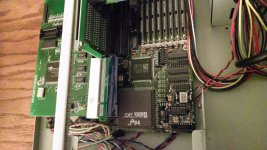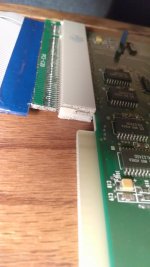cmc
Experienced Member
I recently picked up two 486dx2 motherboards off Craigslist for $25. I'm trying to get at least one of them working as a computer for education. Teaching intro x86 assembly is much more straightforward on a 66mhz 486 than a 3.4ghz quad-core giant with all the new extensions to distract us, and the basics really haven't changed. In case anyone wonders about the usefulness of some old machines! 
Here are some pictures of one of the boards:

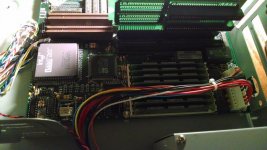
It's a DTK PKM-0037S. 8x1mb SIMMs. I put it in a suitably retro AT case from eBay (one of the slim desktop ones that has been for sale for a while).
So far I have two questions someone here might know about!
1) Any suggestions on how I might upgrade the cache? It appears to be 64k upgradable to 256k. However, I can't find any documentation online about what types of cache chips might work.
2) The turbo switch dupont cable on the case has three pins, labeled "LCH". But the board only has a two pin connector. Can I assume the "C", which is a black wire, is a ground?
Thanks!
Here are some pictures of one of the boards:


It's a DTK PKM-0037S. 8x1mb SIMMs. I put it in a suitably retro AT case from eBay (one of the slim desktop ones that has been for sale for a while).
So far I have two questions someone here might know about!
1) Any suggestions on how I might upgrade the cache? It appears to be 64k upgradable to 256k. However, I can't find any documentation online about what types of cache chips might work.
2) The turbo switch dupont cable on the case has three pins, labeled "LCH". But the board only has a two pin connector. Can I assume the "C", which is a black wire, is a ground?
Thanks!

